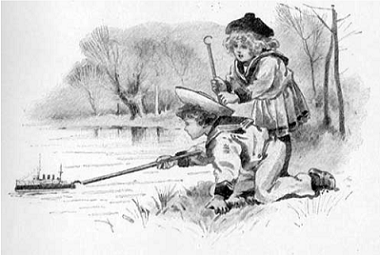
The great thing about using play to teach is that it pulls children into learning. Children love to play and if a learning activity is fun then they will look forward to the activity.
Learning should be fun
Unfortunately, many people experienced a school environment where learning was very dry and boring. That isn’t the right approach for pre-schoolers (it’s not even the approach to use for teenagers or adults!).
For most people, the model for learning we refer to is the school system we experienced. My memory of school is a place that wasn’t much fun and where information was often pushed onto students.
Types of play
According to The National Institute for Play, there are seven types of play. Play can be a powerful tool in education and as a parent it is good to know the different types of play and incorporate them into the activities with your child.
Attunement play
This type of play occurs when a connection is established between people through interacting with each other. This is a natural type of play that occurs from early in your child’s development.
Examples include when a baby and mother make eye contact and exchange smiles.
Body play & movement
Any play that helps your child develop their understanding of how their body works falls within this category. Running, jumping, skipping, dancing and singing are joyful activities that can help stimulate coordination but also help drive learning.
This type of play is so important in that it promotes muscle coordination and also helps children learn about their natural environment. For example, jumping improves your child’s coordination and teaches your child something about gravity. Singing songs develops your child’s vocal chords but also teaches your child about music. It is equally important to get Playground shelter constructions to allow kids to engage in outside activities in a safe environment where their exposure to harmful UV radiation is dramatically reduced.
Object play
When children use physical objects in their play they are conducting object play. Whether your child is playing with toys, banging pots and pans or kicking a ball, they are developing their curiosity through object play.
Social play
This type of play involves play between people. This type of play covers a range of activities with your child such as play between children and includes rough and tumble, making faces, and building connections with others.
Imaginative and pretend play
Whenever a child invents stories from their imagination and acts within that story they are engaging in a unique form of play. Examples include playing prince/princess, pirate play, acting as a shopkeeper and playing doctor.
Storytelling-narrative play
Whenever you or your child read aloud or tell a story you engage in storytelling play.
Creative play
This play occurs when people use imagination to create new ways or ideas about doing things. For example, a person might experiment to find a new way to use a musical instrument.
Serious play
The “Serious Play” talk given by Stuart Brown in 2008 provides a great overview on the importance of play to children and adults.
The presentation below explains the important role ‘play’ provides in the development of the brain for animals, children and adults alike. It is mostly a fun talk where Stuart Brown provides amazing examples of play in the real world. However there are some serious moments when he explains what can happen when play is suppressed.
Being able to play with your child is an incredibly important skill for parents. Enjoying playtime with your child not only improves your connection with your child, but also opens opportunities for teaching your child.
If you want to learn more about Stuart Brown, visit The National Institute for Play.